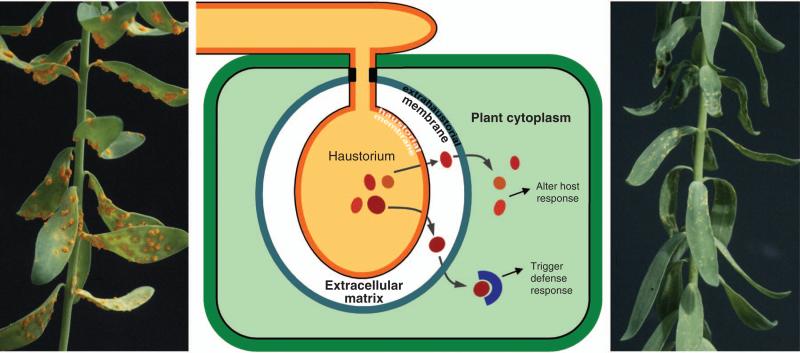Fig. 2.
Trafficking of effectors from rust haustoria. Schematic diagram of a rust haustorium within a host cell showing the extrahaustorial membraneand theextrahaustorial matrix,which is thoughtto be a discrete compartment dueto the presenceof the neckband.Effector proteins are secreted from the haustoria into the extrahaustorial matrix and then transported into the host cell. Once inside the host cytoplasm effectors may alter host metabolism and defence pathways to allow successful infection. This outcome is illustrated in the left panel showing flax rust infecting a susceptible flax plant. Effectors that are recognised by resistance proteins (R) are known as avirulence proteins (Avr) and trigger a defense response. This leads to resistance, which is often characterised by a localised necrosis or hypersensitive response (HR) at attempted infection sites. The right panel shows the outcome of inoculation of flax rust onto a resistant flax plant. Small hypersensitive flecks are the visible signs of the HR.

